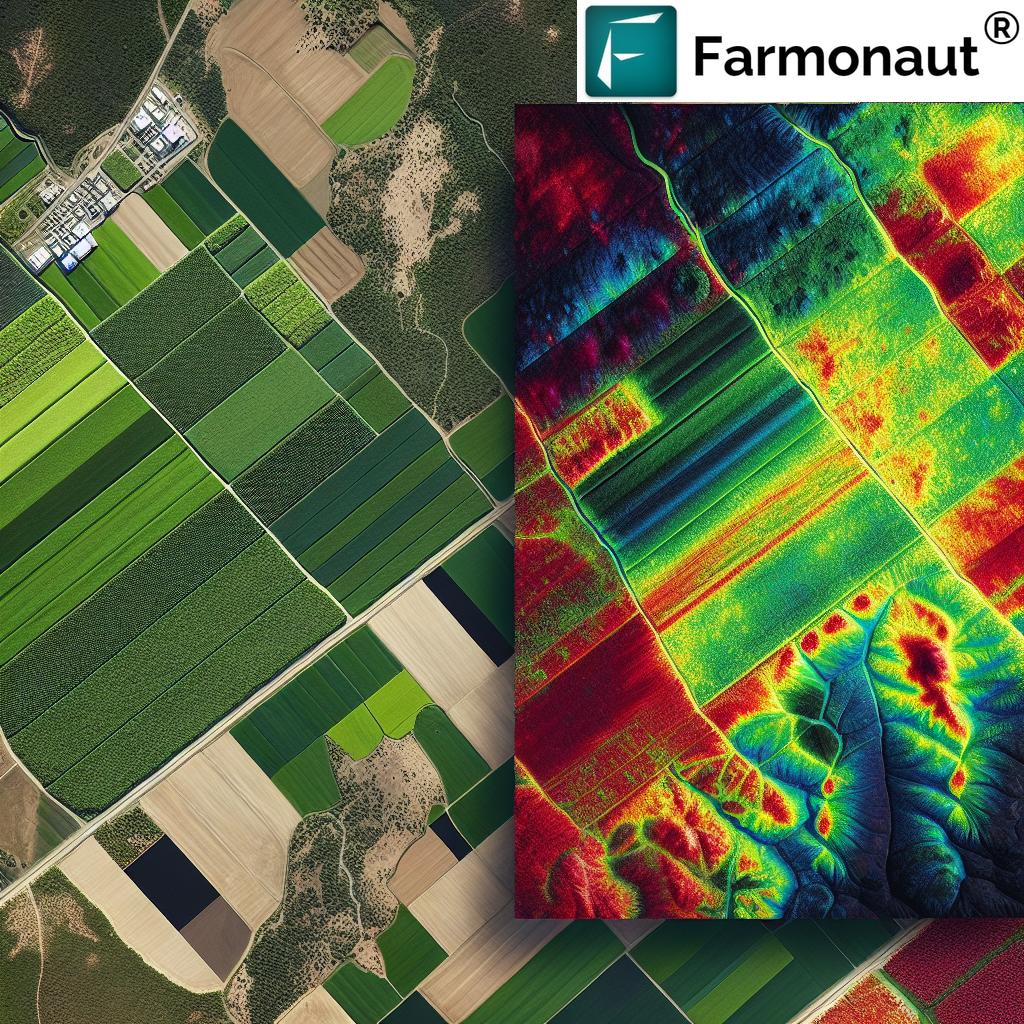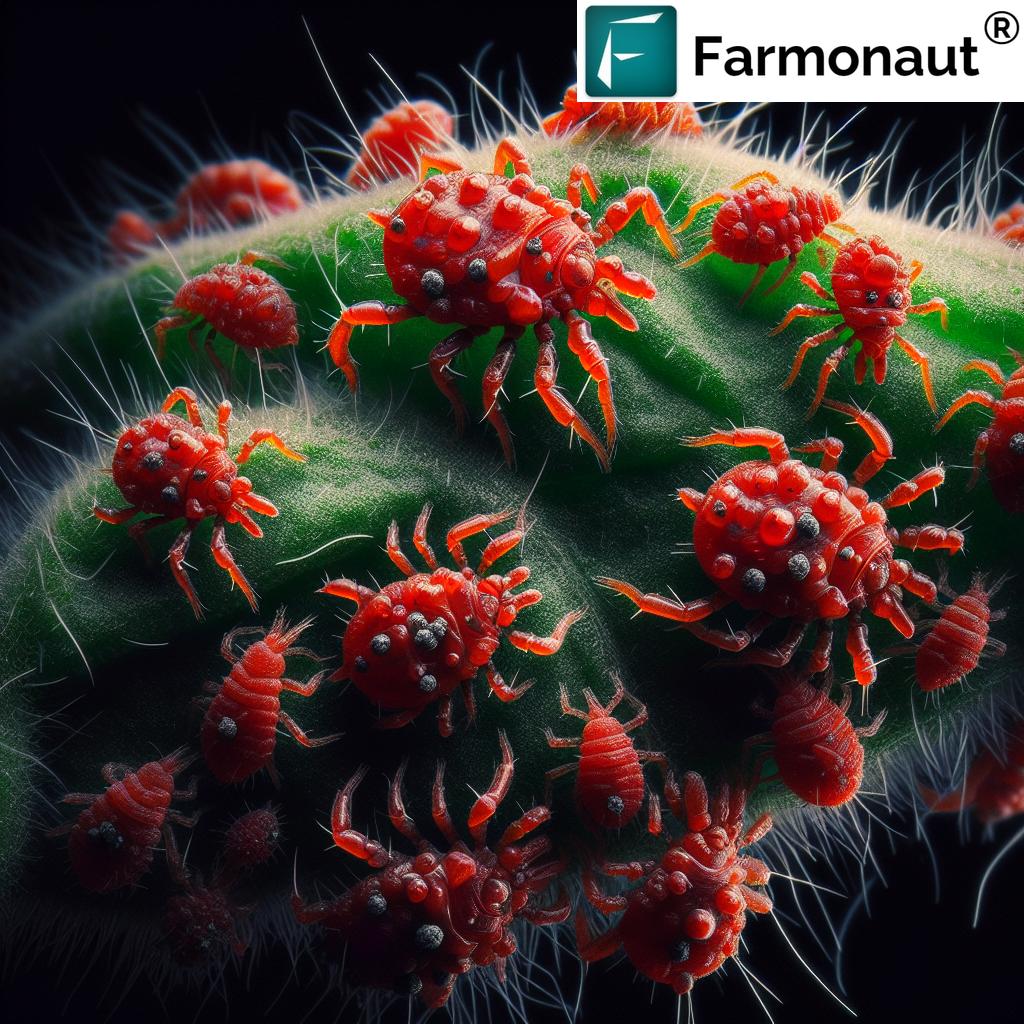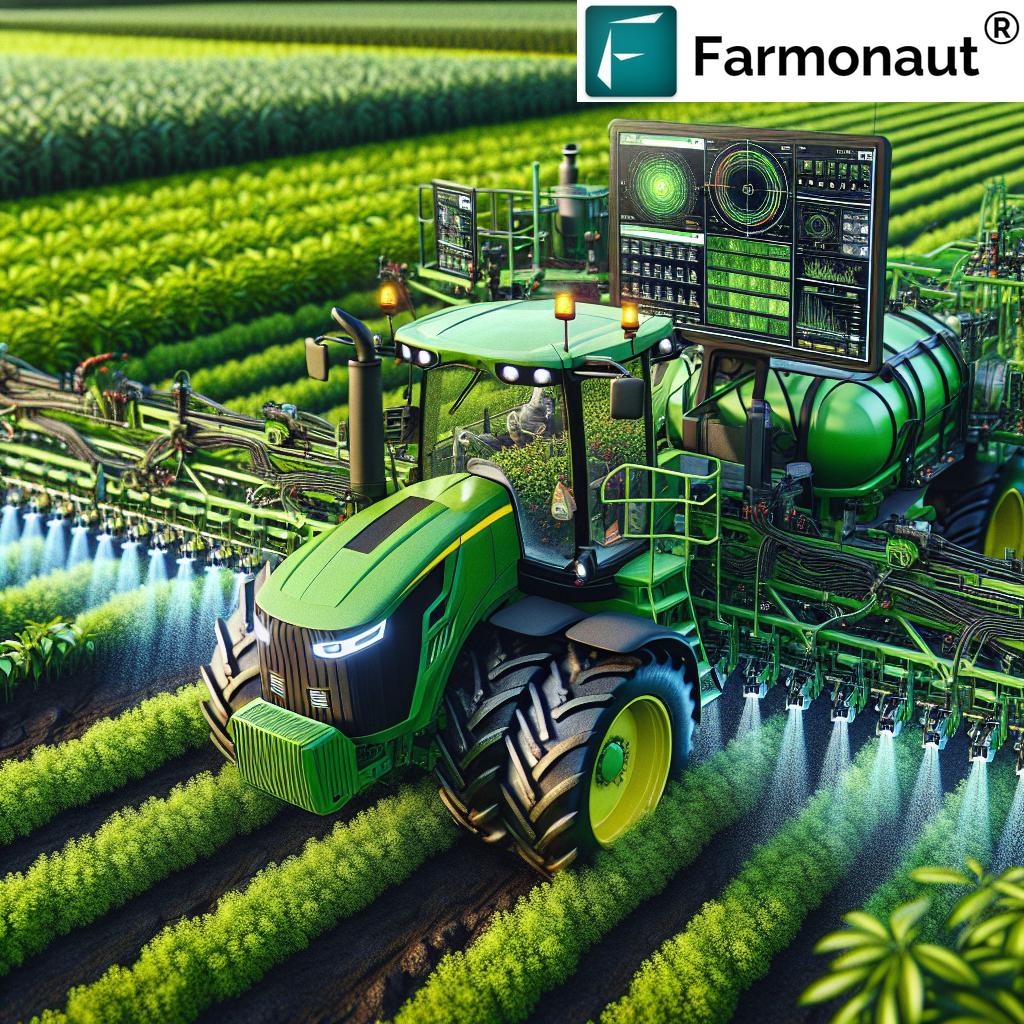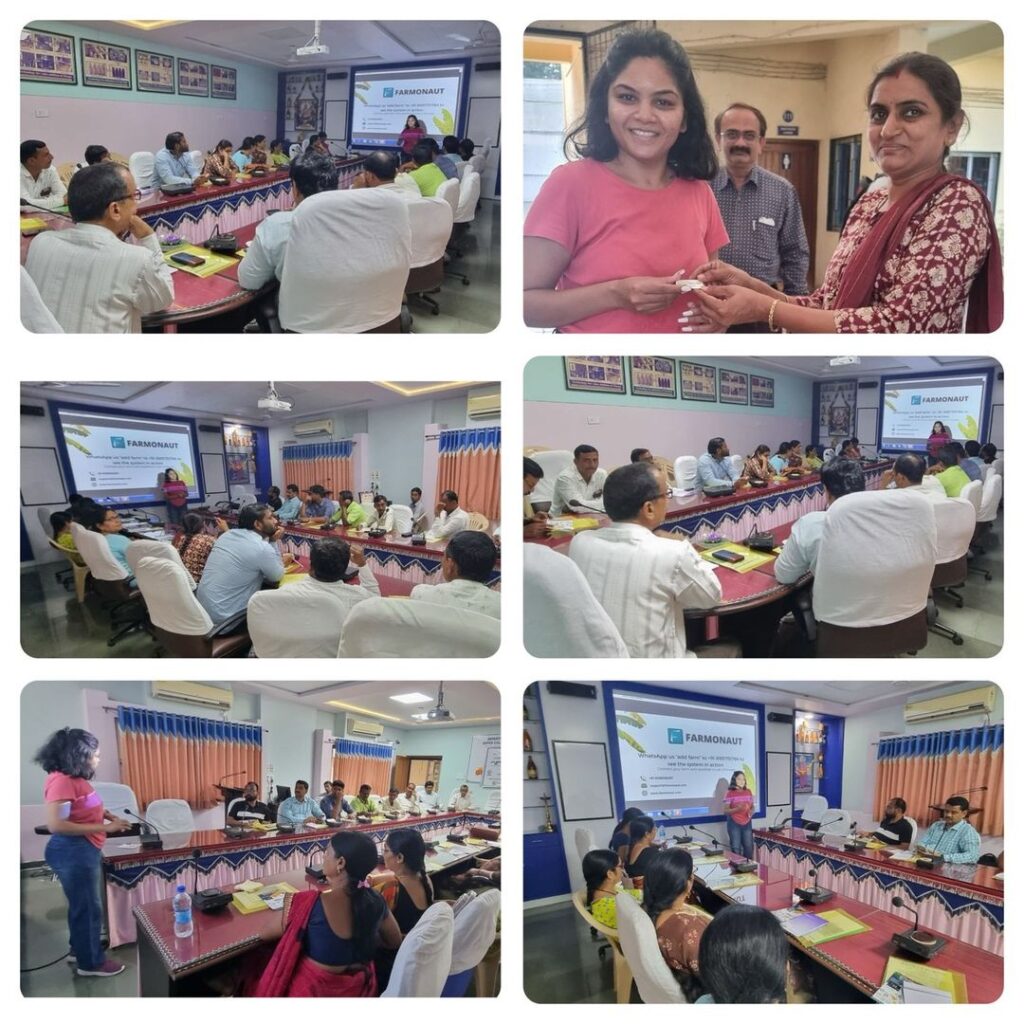Digital Technologies for Water Use & Pest Management 2025: Revolutionizing Sustainable Agriculture
Table of Contents
- Introduction: Farming’s Digital Revolution in 2025
- Digital Technologies for Water Use and Management in Agriculture
- Comparative Feature Table: Water Use & Pest Management Technologies
- Advanced Pest Management Technologies
- The Role of Agriculture Technology Management Agencies (ATMAs)
- Agriculture and New Technologies: What Lies Ahead?
- Farmonaut’s Contribution to Digital Agriculture Innovation
- Frequently Asked Questions (FAQ)
Introduction: Farming’s Digital Revolution in 2025
The landscape of agriculture is evolving with unprecedented speed as digital technologies for water use and management in agriculture and advanced pest management technologies dramatically reshape how we cultivate, protect, and sustain crops. In 2025, the global population continues to grow, climate change intensifies water scarcity and pest challenges, and the pressure to produce more food with fewer resources mounts daily.
This rapid transformation is powered by a wave of new digital tools—from IoT sensors, AI-driven analytics, and satellite monitoring, to mobile applications, cloud-based platforms, and smart irrigation systems.
In this comprehensive blog, we explore how digital technologies are revolutionizing water use, management, and advanced pest management—driving the dual engines of sustainability and productivity for farmers worldwide.
Digital Technologies for Water Use and Management in Agriculture
In the heart of modern farming practices, water use and management emerges as perhaps the most pressing issue of our time. By 2025, water is not just a critical resource; it is a finite asset that requires precise, efficient, and intelligent strategies to maximize yield and minimize wastage.
Why Water Management is a Top Priority in 2025
- Global water scarcity is intensifying; agriculture accounts for 70% of all freshwater withdrawals globally.
- Climate change disrupts rainfall patterns, causing both drought and flooding.
- The need to produce more food with less water is pushing farmers to adopt innovative technologies.
Key Digital Technologies Driving Water Efficiency
- IoT Sensors: Soil moisture sensors, weather stations, and flow meters provide real-time data on the soil, crop, and environmental conditions. This information is crucial for informed irrigation decisions.
- Satellite Remote Sensing: Advanced satellite imagery supports macro-scale monitoring of crop health, soil moisture, and identifies zones of water stress or irrigation irregularities.
- Drone Surveillance: Drones offer adaptable, high-resolution imagery to supplement satellite data, detect water stress, and evaluate the impact of irrigation distribution in real time.
- AI and Big Data Analytics: Platforms use sophisticated algorithms that analyze soil, climate, and crop data to dynamically adjust irrigation schedules, optimize input application, and forecast water requirements.
- Cloud-based Management Platforms: Enable farmers to access actionable insights from any location, monitor field conditions remotely, and implement precision irrigation practices.
From Concept to Field: How Digital Water Management Works
- Data Collection: IoT sensors and remote sensing tools gather real-time data about soil moisture, local weather conditions, and crop needs.
- Insight Generation: AI platforms combine this data with historical trends and climatic variables to produce actionable insights.
- Automated Action: Smart irrigation systems apply the right amount of water at the required time, reducing unnecessary wastage and supporting precision agriculture.
For instance, a farm equipped with these systems can detect when specific zones are experiencing water stress and automatically adjust irrigation accordingly. The results: improved crop yield, reduced water consumption, and more sustainable practices overall.
Benefits of Digital Water Management
- Water Conservation: Digital monitoring and automated control can cut water use by 20–40% in typical farming systems.
- Yield Enhancement: Precise irrigation schedules lead to healthier crops and improved productivity.
- Environmental Protection: Reducing over-irrigation minimizes nutrient leaching, runoff, and soil degradation.
Actionable Insights for Farmers
Farmers benefit from having continuous access to field status updates, actionable irrigation recommendations, and predictive analytics. This makes informed decision-making possible on a day-to-day and even hour-by-hour basis, vastly improving resource management.
For those seeking real-time satellite-based field monitoring and soil analytics, we recommend exploring Farmonaut’s Large-Scale Farm Management Platform. This advanced tool empowers agriculture professionals to remotely monitor vegetation health, soil conditions, and irrigation efficiency for expansive operations—delivering satellite-driven insights and boosting productivity sustainably.
Comparative Feature Table: Digital Technologies for Water Use and Pest Management in Agriculture
| Technology Name | Application Area | Core Functionality | Estimated Water Savings (%) | Estimated Pest Reduction (%) | Cost Range (Estimated) | Level of Adoption |
|---|---|---|---|---|---|---|
| Remote Sensing Platforms (Satellites, Drones) | Both | Large-scale monitoring of crop, soil, and pest conditions with imagery analytics | 18–40% | 10–25% | $$–$$$ | Medium–High |
| IoT Soil Moisture Sensors | Water Use | Real-time soil moisture data for accurate irrigation scheduling | 20–30% | 0% | $–$$ | Medium |
| Precision Irrigation Systems (AI-equipped) | Water Use | Automated water application based on data and crop needs | 25–40% | 0% | $$$ | Medium |
| AI-driven Pest Detection Tools | Pest Management | Automated ID of pest species, outbreaks, and recommended interventions | 0% | 60–90% | $$ | Growing |
| Digital Pest Traps & Sensors | Pest Management | Real-time pest monitoring and population tracking | 0% | 40–70% | $–$$ | Medium |
| Cloud-Based Decision Support Platforms | Both | Integrated data, AI analytics, and remote recommendations | 20–30% | 30–60% | $$ | Medium–High |
| Mobile Applications for Field Monitoring | Both | Mobile-based access to real-time field and pest data | 10–20% | 15–30% | $ | High |
Advanced Pest Management Technologies
Efficient pest management is a cornerstone of sustainable agriculture. In the past, farmers often relied on routine chemical applications, but this broad approach leads to environmental impact, pesticide resistance, and harmful residues. By 2025, advanced pest management technologies provide a radically different path—combining real-time data gathering, digital monitoring, and AI-driven insights to minimize chemical use and protect crops.
Digital Transformation of Pest Control
- Sensor-equipped Pest Traps: Deployed throughout fields, these networked devices monitor pest populations continuously, offering real-time alerts and population analytics.
- AI-Based Pest Identification and Prediction: Machine learning models trained on image and field data can distinguish between pests, beneficial insects, and disease symptoms—enabling early detection and risk forecasting.
- Mobile Applications & Cloud Dashboards: Farmers can recognize, document, and share information about pest outbreaks instantly for rapid intervention.
- Integrated Decision Support Systems: These platforms recommend targeted pest control measures, integrating IPM (Integrated Pest Management) principles for minimal environmental impact.
The shift to digital pest management is driven by the urgent need to reduce synthetic pesticide use, preserve ecosystem balance, and sustain farm profitability into the future.
Key Players & Solutions in Digital Pest Management
- Bayer Digital Pest Management: In 2025, solutions such as Bayer digital pest management platforms exemplify how data analytics, sensory devices, and AI integrate to predict pest outbreaks and recommend precise interventions. These technologies not only allow farmers to minimize pesticide use, but—by combining field data and predictive models—they protect crop populations and safeguard beneficial species.
- Farmonaut’s Crop Health and Pest Alerts: We at Farmonaut support digital pest management by enabling satellite-based field monitoring and identifying suspicious crop activity that could indicate early pest infestation, disease, or stress. Our platforms and AI-driven advisory systems empower farmers with timely alerts and strategic recommendations.
Advanced pest management technologies provide:
- Early detection of pest outbreaks—alerting farmers before infestations escalate
- Precision application of control measures—reducing blanket spraying and chemical wastage
- Conservation of beneficial insect populations—supporting environmental sustainability
If optimizing resource use and ensuring sustainable supply chain transparency is a priority, consider Farmonaut’s blockchain-based traceability solution. This feature ensures every crop batch’s journey is securely recorded and monitored—offering transparency from field to table.
The Impact: Increased Productivity and Environmental Protection
- Studies reveal advanced digital pest management technologies can increase yields by 7–20% and reduce pesticide volumes by 20–60%.
- Data-driven interventions also deliver long-term ecological benefits by fostering natural pest control cycles.
- This real-time, precise approach minimizes financial losses and ensures food security on a global scale.
Financial institutions and insurers looking for authoritative, satellite-based verification can leverage Farmonaut’s Crop Loan & Insurance Verification Tool. This application streamlines the verification process through remote crop analysis, unlocking access to tailored financing and insurance coverage while reducing fraud risks.
The Role of Agriculture Technology Management Agencies (ATMAs)
Without coordinated support, digital transformation in farming would leave many smallholder farmers behind. Enter the agriculture technology management agency (ATMA): a bridge for technology adoption, best practice sharing, and infrastructure support in rural communities.
ATMAs: Bridging the Digital Divide for Farmers
- Facilitate training and knowledge transfer—ensuring that even the smallest-scale farmers understand how to use digital tools.
- Coordinate with government bodies and private technology companies to drive sustainable practices and accelerate adoption.
- Offer demonstration projects and provide practical hands-on learning for technology integration and precision agriculture techniques.
Effective ATMAs are vital for promoting new technologies, supporting the deployment of IoT sensors and decision support platforms, and fostering sustainability in modern farming systems.
ATMAs & Data-Driven Decision Making
- Support community-level analytics and the creation of digital resource management systems for collective water use and pest control.
- Encourage the adoption of cloud-based monitoring applications and AI-powered advisories in resource-constrained regions.
- Provide feedback channels between farmers, companies, and policymakers for ongoing improvements in digital infrastructure.
To enhance your team’s efficiency in vehicle and equipment resource optimization, explore Farmonaut’s Fleet Management Solution. Our fleet management tools provide real-time oversight of agricultural fleets, maximizing productivity and cutting operational costs through advanced satellite and IoT insights.
Agriculture and New Technologies: What Lies Ahead for 2025 and Beyond
The convergence of digital technologies for water use and management in agriculture and advanced pest management technologies is just the beginning. As we look to the future, the integration of AI, machine learning, IoT, and blockchain unlocks ever more sophisticated insights, enabling smarter decision-making and scalable impact for sustainable agriculture.
Emerging Trends in Sustainable Agriculture
- Blockchain-Based Traceability: Trace the journey, origin, and safety of every farm product—a critical step for consumers, regulators, and food companies concerned with authenticity and protection against fraud. Our platform offers blockchain-powered traceability tools for this purpose.
- Automated Robotics and Drones: Next-generation drones and agricultural robots will enable autonomous field operations—from seeding to crop monitoring to targeted spraying.
- Climate-Responsive Algorithms: AI models are adapting fast to dynamically changing climatic conditions, providing predictive risk assessments in regions facing drought, heat, or new pest invasions.
- Environmental Impact Monitoring: Agricultural businesses will increasingly require real-time tools for carbon footprint tracking and regulatory compliance. Our carbon footprinting application delivers actionable insights to support low-emission practices and environmental reporting.
- Multi-Sector Integration: The same satellite sensing technologies used in agriculture will empower related fields, including mining, infrastructure, and even defense intelligence.
Scaling Up: From Farm to Global Supply Chain
- Large-scale adoption of digital platforms enables multinational food producers and retailers to assure sustainable, transparent practices across the global value chain.
- Smartphone penetration and user-friendly apps bring real-time advisory, monitoring, and management right into farmers’ pockets, driving fast, scalable transformation.
Farmonaut’s Contribution to Digital Agriculture Innovation
We at Farmonaut are committed to democratizing satellite-driven insights and digital agriculture technologies for farmers, agribusinesses, and policymakers worldwide.
- Satellite monitoring powered by AI: Our web, Android, and iOS apps provide instant access to crop health analytics, irrigation needs, and early stress or pest detection.
- Jeevn AI Advisory System: Delivers real-time field evaluations, weather forecasts, and custom management strategies, enhancing decision-making for farming, mining, and defense sectors.
- Blockchain-based traceability: Assures product authenticity and supply chain integrity for agricultural and allied industries.
- Fleet management solutions: Enable efficient vehicle tracking, usage, and optimization for farms of all sizes.
- Environmental impact monitoring: Track emissions and carbon footprints affordably, supporting regulatory compliance and sustainable operations.
- Accessible API solutions: Developers can integrate Farmonaut’s data streams into their custom platforms. View API documentation here.
- Affordable subscriptions: Our pricing model delivers scalable, cost-effective digital tools for individual farms, large enterprises, and government agencies alike.
Farmonaut: Key Value Propositions
- Accessibility & affordability: High-frequency monitoring at a fraction of the cost of traditional hardware.
- Productivity: Real-time field insights help users optimize crop growth, resource use, and yield.
- Sustainability: Environmental tracking tools empower low-emission, eco-friendly farming.
- Trust & transparency: Blockchain-backed documentation for safe, secure, and transparent exports.
For comprehensive forest and plantation management solutions, we invite you to access our Crop, Plantation & Forest Advisory Services, which utilize satellite imagery and weather intelligence to support sustainable land and ecosystem management strategies.
Frequently Asked Questions (FAQ)
What are the most impactful digital technologies for water use and management in agriculture?
The most impactful digital technologies for water use and management in agriculture include IoT soil moisture sensors, satellite and drone remote sensing platforms, AI-driven analytics, precision irrigation systems, and integrated cloud-based management software. These technologies collectively help optimize irrigation scheduling, minimize water wastage, and enhance crop yields.
How do advanced pest management technologies reduce pesticide use?
Advanced pest management technologies, such as sensor-equipped pest traps, AI-driven pest identification, and digital decision support platforms, enable farmers to detect pest outbreaks early and target interventions precisely. This approach reduces reliance on broad-spectrum pesticides, lowering their environmental impact and promoting integrated pest management (IPM) strategies.
What is the role of Agriculture Technology Management Agencies (ATMAs) in digital agriculture?
ATMAs play a crucial role in bridging the digital divide by training farmers, supporting technology adoption, facilitating demonstration projects, and connecting stakeholders. They promote sustainable practices and ensure even smallholder farmers can benefit from digital innovations in water use and pest management.
How does Farmonaut help farmers and agribusinesses with digital agriculture?
We at Farmonaut deliver affordable satellite-based crop monitoring, weather forecasting, AI-driven advisory, blockchain traceability, fleet and resource management, and environmental impact tracking. Our platform is accessible via web, mobile, and API, enabling both small-scale farmers and large agri-enterprises to optimize productivity, sustainability, and resource management efficiently.
Can digital agriculture platforms integrate with existing farm management systems?
Yes, many digital agriculture platforms—including Farmonaut—offer APIs for seamless integration with other systems. This allows for efficient data flow, centralized oversight, and custom analytics tailored to an operation’s unique needs.
How do digital technologies contribute to climate resilience in agriculture?
By providing real-time, precise recommendations for irrigation and pest management, digital platforms help minimize the impact of droughts, flooding, and crop disease outbreaks. Climate-responsive AI models and weather-integrated advisories strengthen on-farm resilience and safeguard food security against climate-induced risks.
Conclusion: The Sustainable Future of Agriculture Through Digital Innovation
As we enter 2025 and beyond, digital technologies for water use and management in agriculture and advanced pest management technologies stand at the heart of a global agricultural transformation—one focused on sustainability, productivity, and resilience. Supported by forward-thinking agencies, technology innovators, and digital platforms, the world’s farmers are better equipped to optimize resource use, enhance yield, and protect natural ecosystems.
Through affordable, accessible digital solutions, we can collectively drive the transition toward a more secure, sustainable, and efficient agricultural future. As technology continues to advance, ongoing collaboration among stakeholders will be essential to realize the promise of these innovations at scale.
We at Farmonaut are honored to support this journey—helping farmers, businesses, and governments leverage satellite-driven insights for a thriving food system, robust supply chains, and healthy communities worldwide.















